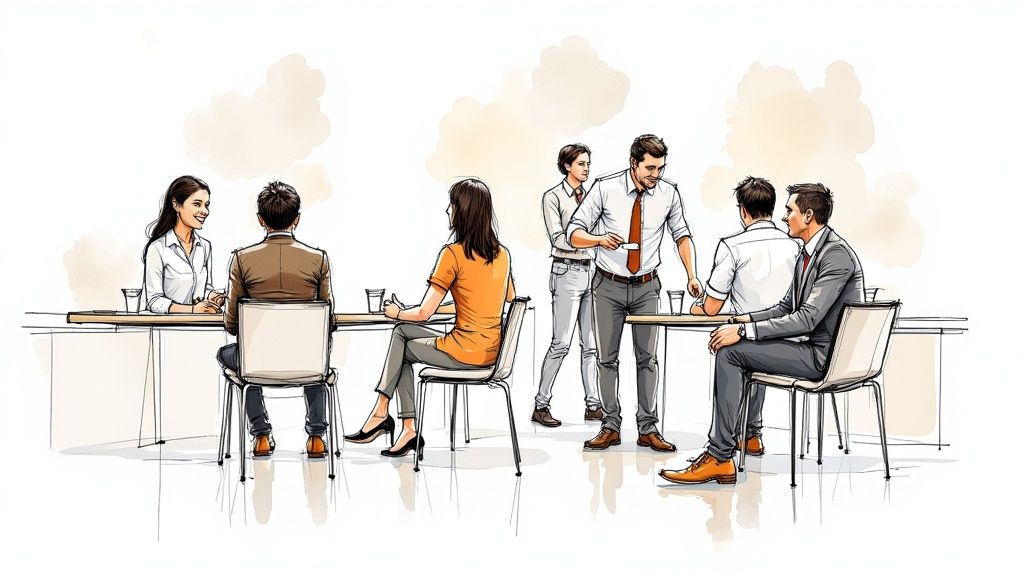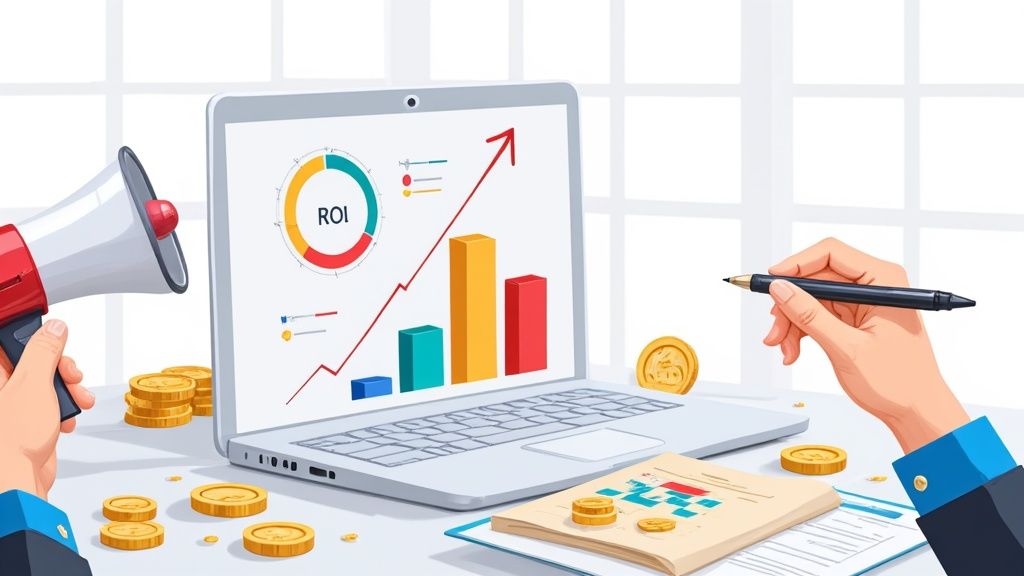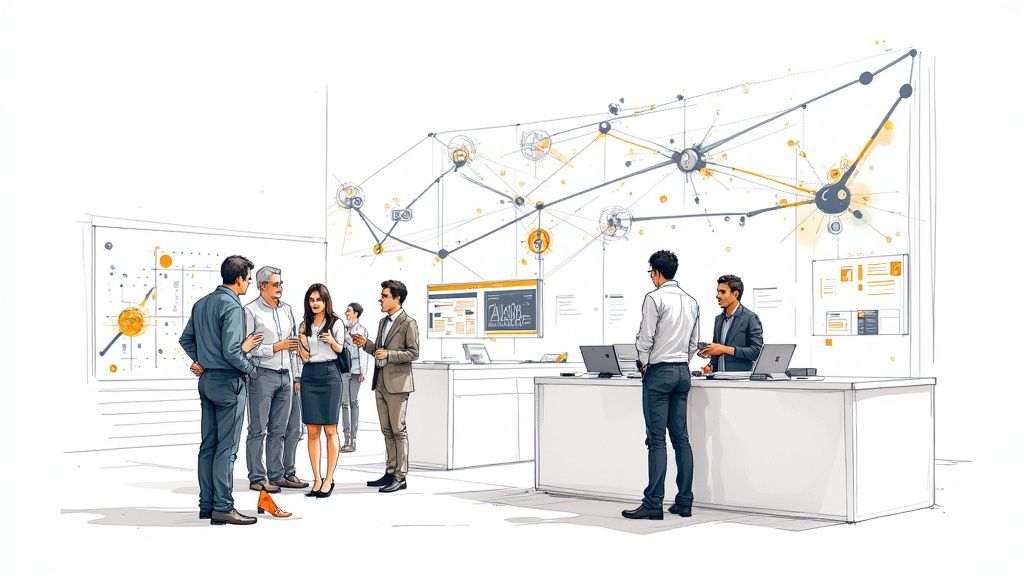Let’s be honest: simply collecting business cards at a trade show isn’t a lead capture strategy. It’s a starting point. Without a well-defined plan, those cards often end up forgotten. This begs the question: why do so many exhibitors miss the mark with effective trade show lead capture?
One key reason is clinging to outdated methods. Relying solely on generic brochures and passive booth displays fails to engage attendees and gather meaningful information. Modern attendees expect interactive experiences and personalized interactions. Exhibitors who want tradeshow success must adapt.
Furthermore, many exhibitors treat every booth visitor the same. This scattershot approach dilutes efforts and wastes valuable time on unqualified leads. A successful B2B trade show marketing strategy hinges on identifying and prioritizing high-potential prospects. This involves trained booth staff who can quickly assess visitor needs and qualify them through strategic conversations. But even with qualified leads, the work isn’t over. The lack of a structured follow-up process often wastes the opportunity to nurture leads and convert them into customers.
Trade shows remain a critical platform for generating new leads and enhancing brand awareness. A significant 72% of exhibitors attend trade shows primarily to gain new leads. About 88% participate to boost brand awareness. These events offer a unique opportunity for businesses to interact directly with potential customers. Impressively, 81% of trade show attendees possess buying authority, making them prime targets for lead generation.

Common Pitfalls in Trade Show Lead Capture
- Lack of Clear Objectives: Failing to define specific, measurable goals for lead capture before the event is a common mistake.
- Inadequate Staff Training: Not properly equipping your team with the skills and tools to engage visitors and qualify leads hinders success.
- Inefficient Data Capture: Relying on manual processes can be slow, error-prone, and hinder timely follow-up.
- Generic Follow-Up: Sending mass emails lacks personalization and often fails to resonate with individual prospects.
Turning Booth Visitors into Qualified Prospects with QR Codes
To avoid these pitfalls, exhibitors need a strategic approach. This involves defining clear goals, training booth staff on qualification techniques, and implementing technology solutions. This is where QR codes for trade shows come in.
By using customizable QR codes, exhibitors can instantly provide attendees with product information, special offers, and lead capture forms. This simplifies the process and allows for personalized follow-up based on the specific QR code scanned. This strategic approach transforms casual booth visitors into qualified prospects, paving the way for a robust post-show follow-up strategy. This is a crucial element of an effective exhibitor success plan.
Beyond the Badge Scanner: Exploring Advanced Solutions
Moving beyond basic badge scanners opens a world of possibilities for optimizing your trade show lead capture. The focus should be on gathering quality data that can translate into sales. This is where utilizing technology makes a significant difference. For instance, a QR code marketing platform lets you generate custom QR codes. These codes can link to specific product pages, landing pages, or dedicated lead capture forms. This provides attendees with a seamless way to access more information and express their interest.

Crafting Lead Forms People Actually Want to Complete
The key to successful trade show lead capture lies in designing forms that benefit both you and your potential clients. This requires carefully balancing the information you need with a user-friendly experience.
- Balancing Information Needs With User Experience: Think of your lead form as the start of a conversation, not an interrogation. Requesting too much information upfront can be off-putting. Focus on essential details like name, company, email, and perhaps one or two qualifying questions about their immediate needs.
- Psychological Triggers and Strategic Question Sequencing: The order of your questions matters. Starting with easy, non-intrusive questions increases the likelihood of completion. Using positive language and clear calls to action also encourages submissions.
- Design Considerations for High-Distraction Environments: In the busy atmosphere of a trade show, your lead form needs to be easily noticeable and quick to complete. Keep the design clean, uncluttered, and mobile-friendly. Large fonts and ample white space improve readability, while clear instructions guide attendees.
- Incorporating Qualification and Privacy Considerations: A few well-placed qualifying questions can greatly enhance your post-show follow-up, helping you categorize leads and prioritize outreach. However, remember privacy regulations. Clearly state your data usage policy and provide opt-in options for marketing communications. This builds trust and ensures compliance.
Separating Genuine Prospects From Casual Attendees
Trade shows offer a unique opportunity to connect with potential customers. However, not every attendee is a serious prospect. To maximize your return on investment, it’s essential to distinguish genuine leads from casual attendees. This involves going beyond simple badge scans and engaging in meaningful conversations to uncover real buying intent.
- Recognizing High-Value Behavioral Signals: Train your booth staff to identify key behavioral signals. Attendees who ask detailed questions about pricing, implementation, or specific product features demonstrate a higher level of interest.
- Implementing Tiered Qualification Systems: A tiered qualification system adds another layer of refinement to lead capture. This system categorizes leads based on criteria such as buying authority, budget, and timeline. This prioritization allows you to focus post-show follow-up on the most promising leads.
The Follow-Up Strategy That Converts Show Leads
The success of your trade show lead capture depends heavily on your post-show activities. Even the most effective on-site engagement can be wasted if you don’t follow up with leads promptly. This is where a solid post-show action plan becomes essential. A surprising number of exhibitors fail to nurture their leads after a trade show. A staggering 80% of exhibitors don’t follow up at all, and roughly 38% wait more than six days to make contact. This delay can be detrimental, considering that 50% of buyers choose the vendor that reaches out first.
- Timing is Everything: The Importance of Speed: The quicker you connect with your leads, the higher your likelihood of converting them into clients. Strive to make initial contact within 24-48 hours of the event.
- Personalization That Resonates: Generic, mass-distributed emails are often overlooked. Personalize your communication by mentioning specific conversations, demonstrated products, or needs expressed by the prospect. This approach demonstrates that you actively listened and understood their needs.
- Segmentation for Success: Targeting the right leads is everything. Segment your leads based on criteria such as buying authority, budget, and timeline. This allows for tailored messaging and prioritizes your follow-up efforts.
- Maintaining Momentum: Not every lead will be ready to purchase immediately. Nurturing leads who aren’t ready to buy is crucial. This might involve sharing valuable content, invitations to webinars, or case studies relevant to their industry.

Proving Your Trade Show Lead Capture ROI
Justifying your trade show budget requires more than just talking about “brand awareness.” You need to demonstrate a tangible trade show ROI. This means tracking key metrics and showing clear connections between your trade show lead capture efforts and actual business results.
- Identifying Key Metrics That Matter: First, understand what your executive team values. Is it the number of qualified leads, the total deal value generated, or the lifetime value of acquired customers?
- Establishing a Measurement System: Implement a system to track key metrics. This system should attribute revenue to specific events and compare the efficiency of different shows.
- Lead Quality and Follow-Up Optimization: Organizations prioritizing timely follow-ups often see a better ROI from their trade show participation. The ROI for trade shows can be substantial, with some companies reporting a 5:1 return. Leads from trade shows are also more valuable, requiring fewer sales calls to close a deal—3.5 sales calls compared to 4.5 without an exhibition lead.
By focusing on a proactive, technology-driven approach, you can dramatically improve your trade show lead generation efforts and prove the value of your investment.
Ready to transform your trade show lead capture and prove its ROI? Discover how QR Star can streamline your process, enhance lead quality, and maximize your return on investment. Visit QR Star now!
